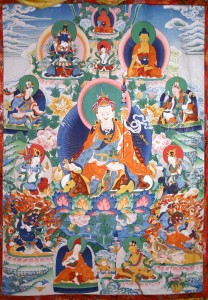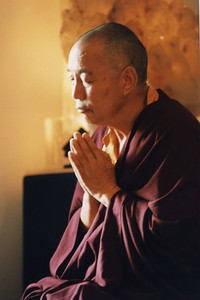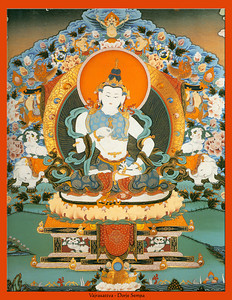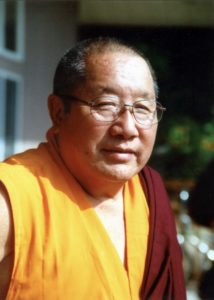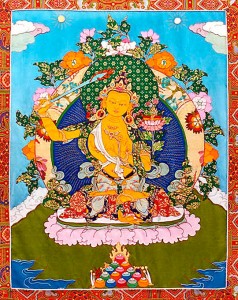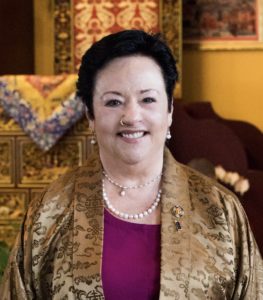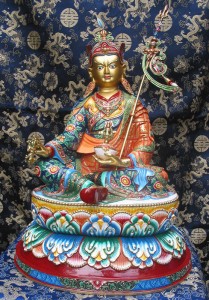The following prayer is from “The Great Perfection: Buddha in the Palm of the Hand”
PAL DEN TSA WA’I LAMA RINPOCHE
Glorious, precious root guru,
DAG GI NYING GA PEMA’I ZE’U DRU LA
Upon the pollen heart of the lotus in my heart,
DREL WA MED PA TAG PAR ZHUG NE KYANG
Without ever separating, always remaining,
KA DRIN CHEN PO’I GO NE JE ZUNG NE
Hold me fast with your great kindness.
KU SUNG THUG KYI NGÖ DRUB TSAL DU SÖL
Pray, bestow the spiritual attainments of body, speech and mind.
PAL DEN LAMA’I NAM PAR THAR PA LA
Towards the way of life and activities of the glorious guru
KED CHIG TSAM YANG LOG TA MI KYE ZHING
May incorrect view never arise, not even for an instant.
CHI DZED CHÖ SU THONG WA’I MÖ GÜ KYI
With fervent regard, may I view all (the guru’s) actions as Dharma activity.
LAMA’I CHIN LAB SEM LA JUG PAR SHOG
May the guru’s blessings enter my mind!
KYE ZHING KYE WA DAG NI THAM CHED DU
In this and in all of my future lifetimes
RIG ZANG LO SEL NGA GYAL MED PA DANG
May I be born of excellent parents, with a clear mind,
free from pride,
NYING JE CHE ZHING LAMA LA GÜ DEN
Possessing great compassion and respectfully relying
upon the guru.
PAL DEN LAMA’I DAM TSHIG LA NE SHOG
May my samaya with the glorious guru always remain firm!
KYE WA KÜN TU YANG DAG LAMA DANG
In all lifetimes, may I never be separated from a perfectly
pure guru.
DREL MED CHÖ KYI PAL LA LONG CHÖD CHING
Utilizing the glorious Dharma to its utmost,
SA DANG LAM GYI YÖN TEN RAB DZOG NE
And by excellently perfecting all pure qualities on the stages
and paths,
DORJE CHANG GI GO PHANG NYUR THOB SHOG
May I swiftly achieve the state of Vajradharahood!
